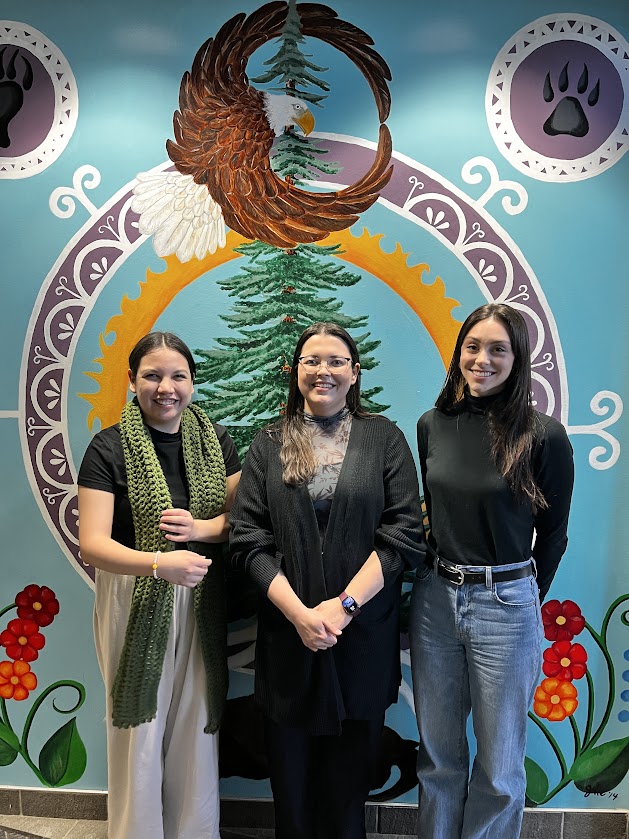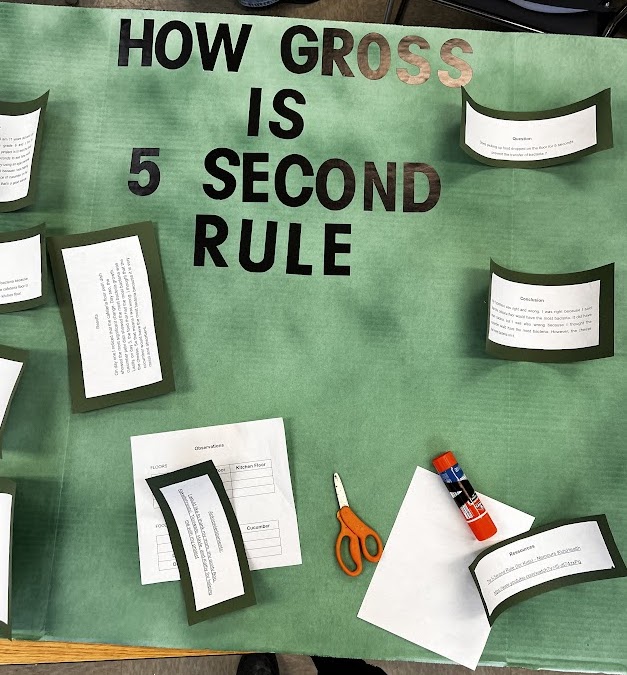Every year in Kahnawà:ke, a Kanien:keha’ka community on Montreal’s South Shore, students present their projects at a science fair organized by the Kahnawà:ke Education Center (KEC).
For more than 15 years, KEC Science Curriculum Consultant Kathy Walsh has supported students at schools across the community as they prepare projects in the weeks leading up to the annual fair. This year, she and KEC Science Projects Liaison Mya Bordeau enlisted the assistance of McGill’s Office of Science Outreach to bring McGill students into the classroom as mentors.

“Having students from McGill come to our schools to sit with and support our students in the development of their STEM inquiries not only helped our students complete their science fair projects, but also introduced our students to the various fields of STEM at McGill and allowed them to meet McGill students who enjoy STEM,” said Walsh.
In the weeks leading up to this year’s fair, eight McGill students from Physics Outreach, Chemistry Outreach, and BrainReach, an outreach program in the Integrated Program in Neuroscience, participated in lunchtime “mentor clubs” in two Kahnawà:ke elementary schools and one high school. The mentors and two other student volunteers also served as judges for this year’s fair, which saw participation from over one hundred Grade 5, 6, 8, and 10 students across Kahnawà:ke.
For McGill’s Science Outreach Program Officer, Jacky Farrell, having McGill students share their passion for science and working with communities to meet their needs are integral to the mission of the Office of Science Outreach.
“When students who love exploring science get together, incredible projects happen,” Farrell said.
The first-place winners in each category at the KEC fair advanced to the Québec Indigenous Science Fair (QISF), which started in 1998. The QISF is organized annually by the Québec Aboriginal Science and Engineering Association (QASEA), a not-for-profit organization that promotes science and engineering to youth living in First Nations and Inuit communities across Québec.
“The science fair allows students to conduct a scientific inquiry in any area of interest,” said Walsh. “This helps foster the development of various skills, such as critical thinking, problem-solving, and project management. I also hope the science fair sparks a joy for STEM and promotes interest in science and technology.”
From magnetic slime to the chemistry of sunscreen
At the final lunchtime mentor club session at Karonhianónhnha Tsi Ionterihwaienstáhkhwa, a Kanien’kéha (Mohawk language) immersion school, the Grade 5 and 6 students participating in this year’s fair were abuzz with excitement as they put the finishing touches on their projects. The environment in the classroom was one of joyful collaboration as the students shared their work with one another, finalized paper abstracts, and assembled their poster boards ahead of the big event.
Science fair participants choose their own topics and begin working on their projects starting in the fall. The projects on display at the mentor club reflected a wide and creative range of scientific curiosities, exploring topics like the creation of magnetic slime, the chemical makeup of different sunscreen brands, and the origin of flowers’ different colors.
At the final mentor club session, McGill Neuroscience PhD student Isabel Sarty mentored alongside Walsh, Bordeau, and a science teacher. For Sarty, science outreach has always been a part of her life. Growing up, Sarty’s physicist father often gave scientific demonstrations to neighborhood kids in her family’s driveway.
“The opportunity to meet the students, learn about what sparks their curiosity, and discover the questions they are eager to explore in their projects was deeply rewarding,” said Sarty. “The environment that the teachers have created in the classroom has encouraged active engagement and inquiry, and I’m thankful for the chance to learn from and contribute to this process.”
Inquiry-based learning
At Karonhianónhnha, Sarty worked with a student on a project about the “five-second rule,” which compared the number of bacteria a piece of food accumulated on the school’s floors compared to the floors at the student’s home.
 Sarty encouraged the student to go one step further and form additional hypotheses about the complex nature of bacteria, even if the answers weren’t immediately clear.
Sarty encouraged the student to go one step further and form additional hypotheses about the complex nature of bacteria, even if the answers weren’t immediately clear.
“Do you have any ideas?” Sarty asked. “They don’t have to be right.”
McGill Science Outreach Educator Megan Phillips said this approach is central to the work that Science Outreach volunteers do in the K-11 school setting.
“Before going into K-11 schools, volunteers are trained on the best practices for working with youth, and a key strategy in this is inquiry-based learning,” said Phillips. “This approach centers the learner’s knowledge and invites them to explore and engage with science topics in an empowering way.”
The student and another sitting nearby took up Sarty’s invitation for further scientific exploration, sharing their emerging theories about how bacteria grow and spread. Their passion for science and eagerness for discovery were evident, and the mentor clubs offered a supportive environment to explore their curiosities.
Following the KEC fair in February, the winners brought their projects to the QISF in Gatineau in March. There, students from Kahnawà:ke took home prizes in six categories – a testimony not only to the accomplishments of these aspiring young scientists but also to the supportive and engaging environment that Walsh, Bordeau, and the students’ teachers have fostered at the mentor clubs in collaboration with McGill mentors.
For more information on McGill’s science outreach, please visit the Office of Science Outreach webpage.
